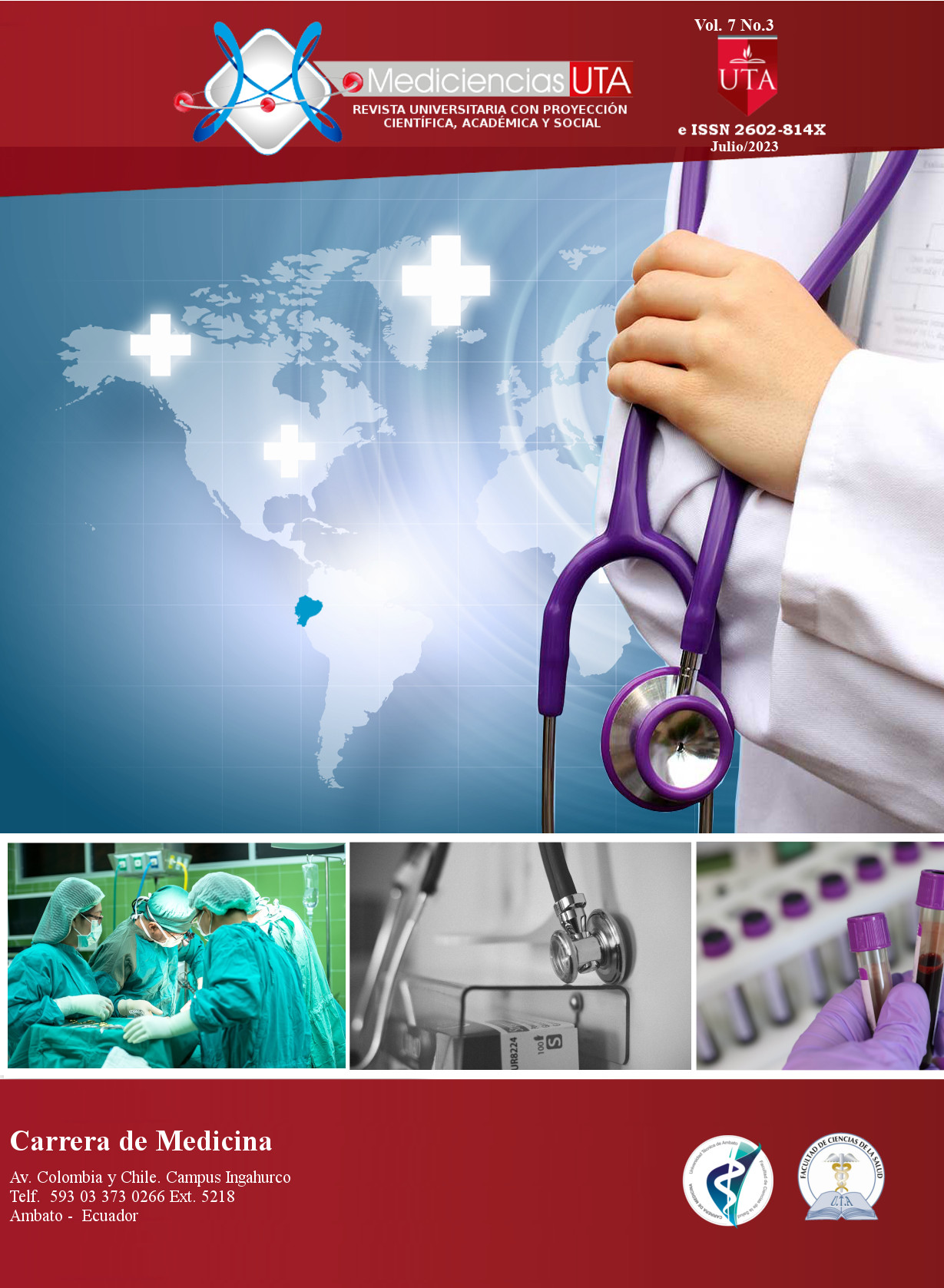Manejo actual de la otitis externa maligna. Una revisión sistemática.
Contenido principal del artículo
Resumen
INTRODUCCIÓN: La otitis externa maligna (OEM), o también llamada otitis externa necrotizante, es una infección potencialmente mortal, que afecta principalmente al canal auditivo externo, produciendo osteomielitis del hueso temporal; se extiende hasta la base del cráneo y tejido circundante, provocando sepsis; llegando a comprometer los nervios craneales y generar afección multisistémica. Objetivos General: Describir el manejo actual de la otitis externa maligna. Objetivos específicos: 1) Determinar la etiología de la otitis externa maligna. 2) Determinar las complicaciones de la de la otitis externa maligna. MÉTODOS: se realizó una revisión sistemática según las guías PRISMA 2020 con búsqueda de artículos científicos, con el termino otitis externa maligna. Se recuperaron 40 artículos correspondientes a los últimos 5 años, obtenidos de bases de datos como Cochrane, Google académico, Medline, Mendeley, ScientDirect, IntechOpen. Los riesgos de sesgo en los estudios observaron diferencias sistemáticas por la heterogeneidad de los pacientes y los tratamientos entre los grupos. RESULTADOS: el manejo de la otitis externa maligna incluye tratamiento con antibióticos anti pseudomona como las fluoroquinolonas en combinación con un betalactámico y un antifúngico como la anfotericina B, voriconazol, fluconazol o equinocandinas; además del tratamiento con desbridamiento quirúrgico del canal auditivo y mastoidectomía radical, para evitar el riesgo de sepsis neurocraneal, obteniéndose buenos resultados. DISCUSIÓN: La otitis externa maligna, es una patología de rara ocurrencia que afecta a pacientes inmunocomprometidos, cuya morbimortalidad es alta, si no se trata adecuadamente. Sus principales agentes causales son: pseudomona aeruginosa, estafilococo aureus, Cándida spp, Aspergillus spp y Geotrichum. La importancia de esta investigación radica en optimizar la atención en el paciente con OEM, realizando un diagnóstico clínico e imagenológico oportuno, para brindar una alternativa terapéutica eficaz, basada en antibioticoterapia de amplio espectro, el tratamiento antifúngico, complementario al tratamiento quirúrgico, para evitar complicaciones.
Descargas
Detalles del artículo

Esta obra está bajo una licencia internacional Creative Commons Atribución-NoComercial-CompartirIgual 4.0.



